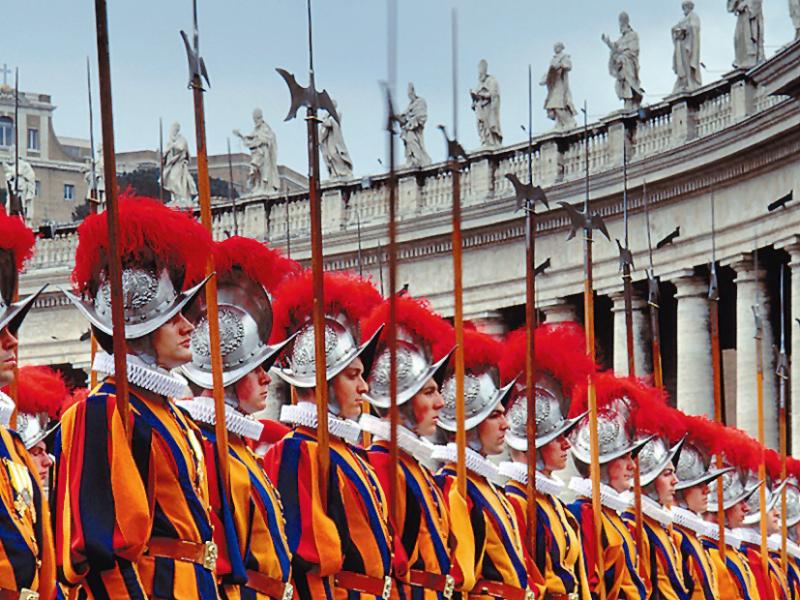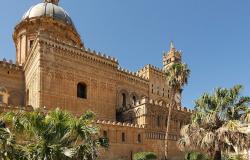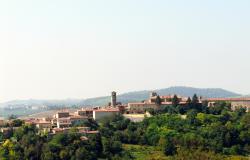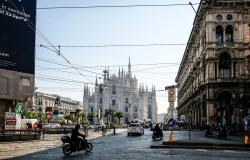Located within the heart of Rome sits the smallest country in the world. The population of Vatican City is a mere 831. Most of these residents are priests and nuns, working closely with the head of the Catholic Church, but 22 of the Vatican City citizens are children. That’s because tucked away behind St. Peter’s square, 110 Swiss Guards live with their families within the walls of Vatican City. The recognizable Swiss Guards are a modern day mainstay of Vatican City. Their bright uniforms and intimidating halberds make their presence around the Vatican hard to miss.
History
The tradition of Swiss soldiers guarding the Pope began in 1506 when Pope Julius II recruited mercenaries from Switzerland to protect Vatican City. The true test of loyalty came on May 6, 1527 when 147 Swiss soldiers were slain protecting the Pope during the Sack of Rome. The surviving group of 42 guards whisked then-Pontiff Pope Clement VII to safety by making use of the secret passages that connect the Vatican to Castel Sant’Angelo. In commemoration of that courageous battle, new Swiss Guard recruits are always sworn in on May 6th in the San Damaso Courtyard. Taking the oath in May is the last step in the long process of becoming a member of the elite group. New recruits must be between 19 and 30 years old. They must be Roman Catholic Swiss citizens with Swiss military training. Hopefuls must also be at least 5’7’’ (174 cm) and unmarried. Once joining the ranks, guards serve at least two years, and are welcome to extend their service up to 25 years. The Swiss force guards the Vatican’s four entrances and is charged with ensuring the Pope’s personal safety. The guards work long shifts, round the clock, and so are always close at hand and live in apartments within Vatican City. The Pontifical Swiss Guard is an exception to the Swiss rulings of 1874 and 1927 forbidding all military capitulations and recruitment of Swiss by foreign powers. this is possible on the basis of the of the unique political status of the Vatican and of the essentially bodyguard status of the unit. A small force maintained by the Holy See is responsible for the safety of the Pope, including the security of the Apostolic Palace.
Legend has it that Michelangelo designed the Swiss Guard uniforms, but the current military dress was actually created in 1914 by Jules Repond. A single uniform is made of 154 pieces and must be custom tailored for each guard, so each suit hanging near the armory will have an individual soldier’s name pinned to it. Oath of Loyalty When new guards are sworn on May 6 in the Cortile di San Damaso in the Vatican, the chaplain of the guard reads aloud the oath in the language of the guard which is mostly German: The Italian Version is: "Giuro di servire fedelmente, lealmente e onorevolmente il Sommo Pontefice (actual Pope) e i suoi legittimi successori, come pure di dedicarmi a loro con tutte le forze, sacrificando, ove occorra, anche la vita per la loro difesa. Assumo del pari questi impegni riguardo al Sacro Collegio dei Cardinali per la durata della Sede vacante. Prometto inoltre al Capitano Comandante e agli altri miei Superiori rispetto, fedeltà e ubbidienza. Lo giuro. Che Iddio e i nostri Santi Patroni mi assistano." The English version is: "I swear I will faithfully, loyally and honourably serve the Supreme Pontiff [actual Pope] and his legitimate successors, and also dedicate myself to them with all my strength, sacrificing if necessary also my life to defend them. I assume this same commitment with regard to the Sacred College of Cardinals whenever the see is vacant. Furthermore I promise to the Commanding Captain and my other superiors, respect, fidelity and obedience. This I swear! May God and our Holy Patrons assist me!" When his name is called, each new guard approaches the Pontifical Swiss Guard's flag, grasping the banner in his left hand. He raises his right hand with his thumb, index, and middle finger extended along three axes, a gesture that symbolizes the Holy Trinity, and says: "Io, [name of the new guard], giuro di osservare fedelmente, lealmente e onorevolmente tutto ciò che in questo momento mi è stato letto. Che Dio e i suoi santi patroni mi assistano." "I, [name of the new guard], swear diligently and faithfully to abide by all that has just been read out to me, so grant me God and so help me his Saints."
To know more about it visit Guardia Svizzera Pontificia



















